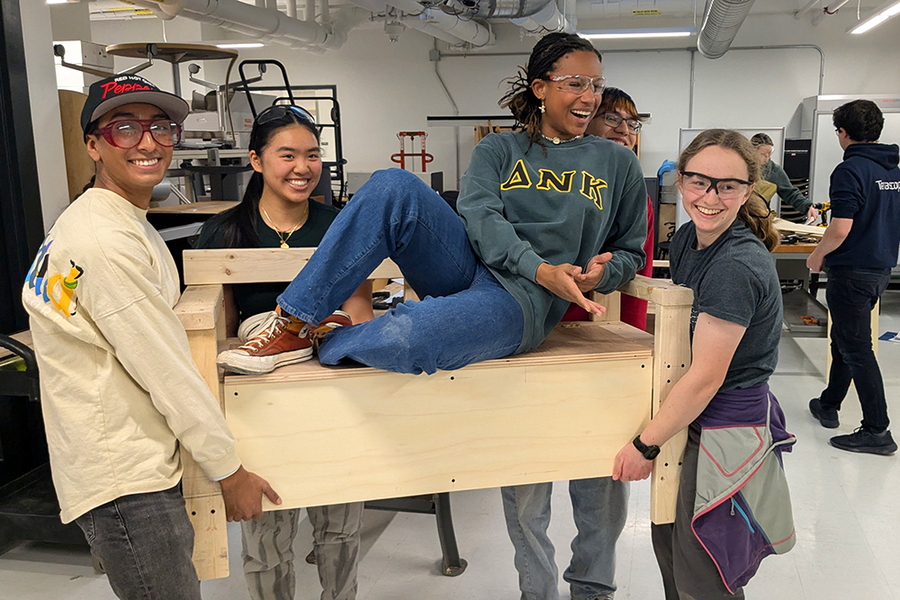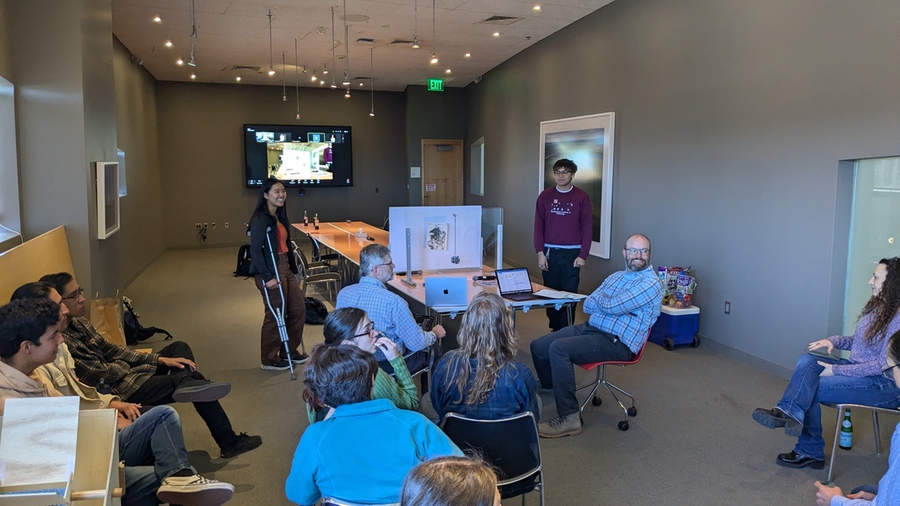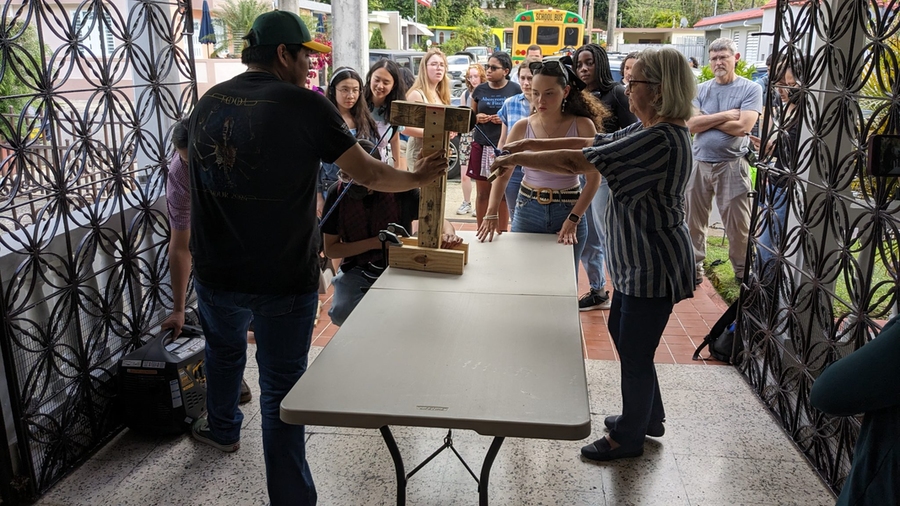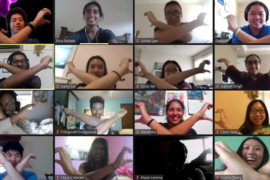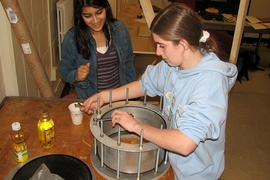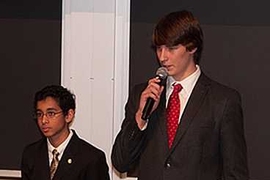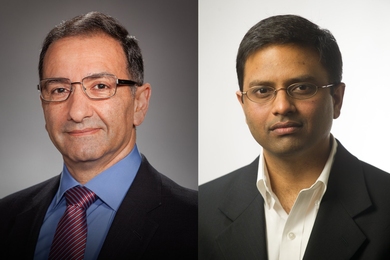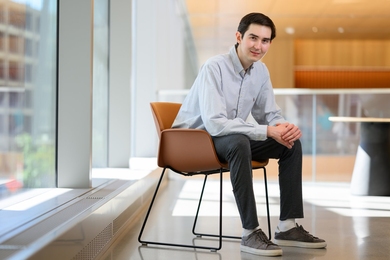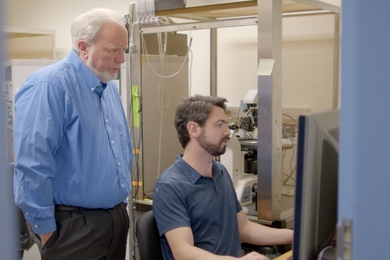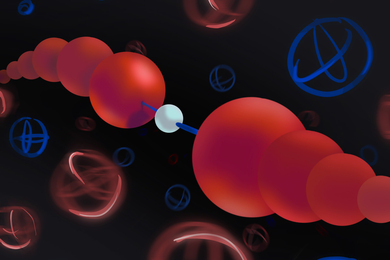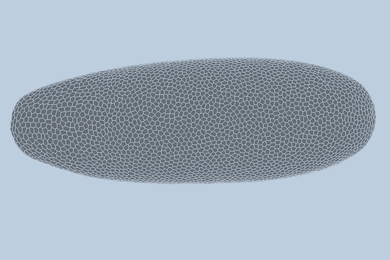In addition to the typical rigors of MIT classes, Terrascope Subject 2.00C/1.016/EC.746 (Design for Complex Environmental Issues) poses some unusual hurdles for students to navigate: collaborating across time zones, bridging different cultural and institutional experiences, and trying to do hands-on work over Zoom. That’s because the class includes students from not only MIT, but also Diné College in Tsaile, Arizona, within the Navajo Nation, and the University of Puerto Rico-Ponce (UPRP).
Despite being thousands of miles apart, students work in teams to tackle a real-world problem for a client, based on the Terrascope theme for the year. “Understanding how to collaborate over long distances with people who are not like themselves will be an important item in many of these students’ toolbelts going forward, in some cases just as much as — or more than — any particular design technique,” says Ari Epstein, Terrascope associate director and senior lecturer. Over the past several years, Epstein has taught the class along with Joel Grimm of MIT Beaver Works and Libby Hsu of MIT D-Lab, as well instructors from the two collaborating institutions. Undergraduate teaching fellows from all three schools are also key members of the instructional staff.
Since the partnership began three years ago (initially with Diné College, with the addition of UPRP two years ago), the class themes have included food security and sustainable agriculture in Navajo Nation; access to reliable electrical power in Puerto Rico; and this year, increasing museum visitors’ engagement with artworks depicting mining and landscape alteration in Nevada.
Each team — which includes students from all three colleges — meets with clients online early in the term to understand their needs; then, through an iterative process, teams work on designing prototypes. During MIT’s spring break, teams travel to meet with the clients onsite to get feedback and continue to refine their prototypes. At the end of the term, students present their final products to the clients, an expert panel, and their communities at a hybrid showcase event held simultaneously on all three campuses.
Free-range design engineering
“I really loved the class,” says Graciela Leon, a second-year mechanical engineering major who took the subject in 2024. “It was not at all what I was expecting,” she adds. While the learning objectives on the syllabus are fairly traditional — using an iterative engineering design process, developing teamwork skills, and deepening communication skills, to name a few — the approach is not. “Terrascope is just kind of like throwing you into a real-world problem … it feels a lot more like you are being trusted with this actual challenge,” Leon says.
The 2024 challenge was to find a way to help the clients, Puerto Rican senior citizens, turn on gasoline-powered generators when the electrical power grid fails; some of them struggle with the pull cords necessary to start the generators. The students were tasked with designing solutions to make starting the generators easier.
Terrascope instructors teach fundamental skills such as iterative design spirals and scrum workflow frameworks, but they also give students ample freedom to follow their ideas. Leon admits she was a bit frustrated at first, because she wasn’t sure what she was supposed to be doing. “I wanted to be building things and thought, ‘Wow, I have to do all these other things, I have to write some kind of client profile and understand my client’s needs.’ I was just like, ‘Hand me a drill! I want to design something!’”
When he took the class last year, Uziel Rodriguez-Andujar was also thrown off initially by the independence teams had. Now a second-year UPRP student in mechanical engineering, he’s accustomed to lecture-based classes. “What I found so interesting is the way [they] teach the class, which is, ‘You make your own project, and we need you to find a solution to this. How it will look, and when you have it — that’s up to you,’” he says.
Clearing hurdles
Teaching the course on three different campuses introduces a number of challenges for students and instructors to overcome — among them, operating in three different time zones, overcoming language barriers, navigating different cultural and institutional norms, communicating effectively, and designing and building prototypes over Zoom.
“The culture span is huge,” explains Epstein. “There are different ways of speaking, different ways of listening, and each organization has different resources.”
First-year MIT student EJ Dominguez found that one of the biggest obstacles was trying to convey ideas to teammates clearly. He took the class this year, when the theme revolved around the environmental impacts of lithium mining. The client, the Nevada Museum of Art, wanted to find ways to engage visitors with its artwork collection related to mining-related landscape changes.
Dominguez and his team designed a pendulum with a light affixed to it that illuminates a painting by a Native American artist. When the pendulum swings, it changes how the visitor experiences the artwork. The team built parts for the pendulum on different campuses, and they reached a point where they realized their pieces were incompatible. “We had different visions of what we wanted for the project, and different vocabulary we were using to describe our ideas. Sometimes there would be a misunderstanding … It required a lot of honesty from each campus to be like, ‘OK, I thought we were doing exactly this,’ and obviously in a really respectful way.”
It’s not uncommon for students at Diné College and UPRP to experience an initial hurdle that their MIT peers do not. Epstein notes, “There’s a tendency for some folks outside MIT to see MIT students as these brilliant people that they don’t belong in the same room with.” But the other students soon realize not only that they can hold their own intellectually, but also that their backgrounds and experiences are incredibly valuable. “Their life experiences actually put them way ahead of many MIT students in some ways, when you think about design and fabrication, like repairing farm equipment or rebuilding transmissions,” he adds.
That’s how Cauy Bia felt when he took the class in 2024. Currently a first-year graduate student in biology at Diné College, Bia questioned whether he’d be on par with the MIT students. “I’ve grown up on a farm, and we do a lot of building, a lot of calculations, a lot of hands-on stuff. But going into this, I was sweating it so hard [wondering], ‘Am I smart enough to work with these students?’ And then, at the end of the day, that was never an issue,” he says.
The value of reflection
Every two weeks, Terrascope students write personal reflections about their experiences in the class, which helps them appreciate their academic and personal development. “I really felt that I had undergone a process that made me grow as an engineer,” says Leon. “I understood the importance of people and engineering more, including teamwork, working with clients, and de-centering the project away from what I wanted to build and design.”
When Bia began the semester, he says, he was more of a “make-or-break-type person” and tended to see things in black and white. “But working with all three campuses, it kind of opened up my thought process so I can assess more ideas, more voices and opinions. And I can get broader perspectives and get bigger ideas from that point,” he says. It was also a powerful experience culturally for him, particularly “drawing parallels between Navajo history, Navajo culture, and seeing the similarities between that and Puerto Rican culture, seeing how close we are as two nations.”
Rodriguez-Andujar gained an appreciation for the “constant struggle between simplicity and complexity” in engineering. “You have all these engineers trying to over-engineer everything,” he says. “And after you get your client feedback [halfway through the semester], it turns out, ‘Oh, that doesn’t work for me. I’m sorry — you have to scale it down like a hundred times and make it a lot simpler.’”
For instructors, the students’ reflections are invaluable as they strive to make improvements every year. In many ways, you might say the class is an iterative design spiral, too. “The past three years have themselves been prototypes,” Epstein says, “and all of the instructional staff are looking forward to continuing these exciting partnerships.”
